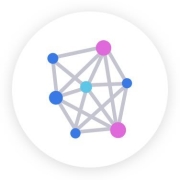Digital Adoption Platforms optimize user experience and increase productivity by guiding users through digital tools and processes. They help businesses streamline software adoption and improve ROI on technology investments.
The top 5 Digital Adoption Platform solutions are Oracle Guided Learning, WalkMe, Whatfix, AppLearn ADOPT and Appcues, as ranked by PeerSpot users in March 2025. Oracle Guided Learning received the highest rating of 0.0 among the leaders, is the most popular solution in terms of searches by peers, and holds the largest mind share of 39.9%.
These platforms provide contextual guidance, helping users understand software functionalities with on-screen prompts and interactive tutorials. By offering personalized support and analytics, they ensure users become proficient in technology, leading to enhanced productivity and reduced support costs.
What are the critical features?In the finance industry, adoption platforms simplify compliance processes and ensure precise use of complex software. In healthcare, they aid in efficient management of patient information systems. For manufacturing, these solutions streamline operations with better utilization of ERP systems.
Digital Adoption Platforms help organizations improve technology utilization and ensure users are fully benefiting from software investments, enhancing overall business performance.









Digital adoption platforms, sometimes referred to as DAPs, are platforms that enable software onboarding, which is suitable for all levels of user understanding of the product. The platforms consist of software that is layered on top of other software, including apps, websites, or products, and work by guiding users through the work process of the explained solution, providing them with contextual information. The platforms prompt usability and enhance productivity after successful completion of the adoption process, helping businesses make the most of their software investments, as well as assisting users with the right usage of the newly introduced product. Many DAPs are powered by machine learning and AI and customize the adoption process to fit the needs of every individual user. They can offer in-app support and training and automate onboarding for employees or customers.
The purpose of digital adoption platforms is to simplify the process of the digital adoption of a certain product and eliminate the risk of an inefficient work process that can be caused by users not understanding the new technology that they need to work with. Efficiently incorporated DAPs can help companies avoid user dissatisfaction as well as poor performance, all the while helping to generate positive return on the company's investment in that software. This can potentially influence future decision-making about continuing the usage of the software or upgrading to a different one to benefit the company more.
These platforms achieve successful digital adoption for users by guiding them through all parts of the applications, explaining in detail each process, and suggesting additional tips and information. DAPs may offer user guides, featuring images, or videos and essential information, step-by-step product tours, or other explanations specifically catered to the company’s associates’ needs. Digital adoption platforms also offer organizations thorough insight on the performance of users throughout the adoption process, delivering frequent data reports and providing different analytics. Through this data, companies can see how their associates are undergoing the education process, but also gain insight into the software’s performance and establish potential issues to fix and realize the most of their investment.
Some digital adoption platforms offer additional features like the creation of self-help functions to help users find the answers to their questions more easily or even expert help, assisting organizations in the implementation of the platforms, as well as providing continuous guidance throughout the entire process.
If a company utilizes a digital adoption platform and associates successfully complete the training process, it may lead to the optimal usage of the new product and the potential digital transformation of the organization.
Due to the similarity of term names, digital adoption and digital transformation are commonly mistaken for the same process, but they aren't. Digital adoption is the process of reaching proficiency in the usage of a software, platform, app, or any other technological tool. It is used by organizations to educate their employees and other associates when introducing new software and it serves to ensure that all users know how to properly operate with it through simple individualized explanations.
Digital transformation is the process by which a company digitalizes its existing processes, replacing manual systems with more technologically advanced ones. It is conducted in order to modernize the way a business operates as well as to bring customers a better experience. This is an ongoing process because of the rapid development of technologies and thus organizations need to keep track of new updates and upgrades, and introduce them into the workspace in a timely manner. In order to avoid outdated software, companies turn to digital adoption.
Digital adoption is the process that leads to efficient digital transformation because, through it, organizations can have up-to-date technology in the workspace as well as have employees that understand how to use it. The result of digital transformation, supported by adequate digital adoption, is digital maturity – a state in which businesses manage to use the latest technologies efficiently and improve their work because of them.
Digital adoption brings different benefits to the workspaces where it is initiated. The advantages and potential disadvantages of this process include the following: